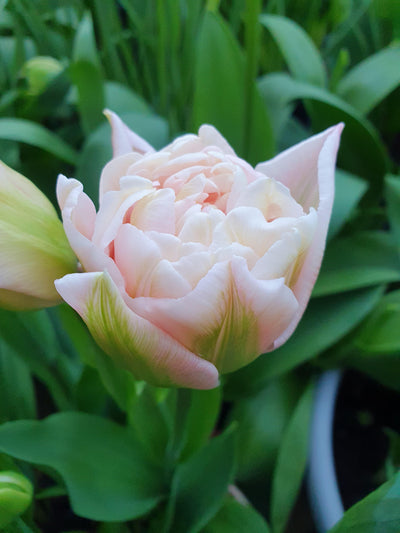Mud glorious mud!
If you'd asked me ten years ago that I would be absolutely over the moon, excited and super pleased to receive a lorry load of mud as a gift, then I would have laughed in your face. However, over the years as I've learnt more about gardening, I've realised the importance of jolly good soil!

There is so much I could talk about in regards to soil science, but I'll try and keep it simple with 5 reasons why you should consider looking at and understanding your soil.
1) The soil is where all the nutrients are for your seedlings and plants to grow from. If your soil is lack lustre with no nutrients then it will be hard to get certain plants to grow.
2) Not all plants like the same soil. Flowers and plants such as Sweet Peas and Roses love really rich, fertile soil (one with lots of nutrients!). Whereas others prefer dry and poor soil- Wildflowers, Poppies and Lavender prefer this.
3) You may hear gardeners talk abour 'free draining soil'- this basically means that the water will flow through the soil- this is good for a huge amount of plants (although there are some exceptions). You don't want certain flowers that like free draining soil to be sat in a boggy mess- they won't thrive and you;ll be disheartened when they don't boom at all, or as you expect.
4) Soil type- there are many types of soil but working out which type yours is will really save you time and money in the long run. Plus it means once you understand your soil type, you can make choices to make it better in certain instances if you wish.
The RHS defines different soil types as:
- Clay soils have over 25 percent clay. Also known as heavy soils, these are potentially fertile as they hold nutrients bound to the clay minerals in the soil. But they also hold a high proportion of water due to the capillary attraction of the tiny spaces between the numerous clay particles. They drain slowly and take longer to warm up in spring than sandy soils. Clay soils are easily compacted when trodden on while wet and they bake hard in summer, often cracking noticeably. These soils often test the gardener to the limits, but when managed properly with cultivation and plant choice, can be very rewarding to work with
- Sandy soils have high proportion of sand and little clay. Also known as light soils, these soils drain quickly after rain or watering, are easy to cultivate and work. They warm up more quickly in spring than clay soils. But on the downside, they dry out quickly and are low in plant nutrients, which are quickly washed out by rain. Sandy soils are often very acidic
- Silt soils, comprised mainly of intermediate sized particles, are fertile, fairly well drained and hold more moisture than sandy soils, but are easily compacted
- Loams are comprised of a mixture of clay, sand and silt that avoid the extremes of clay or sandy soils and are fertile, well-drained and easily worked. They can be clay-loam or sandy-loam depending on their predominant composition and cultivation characteristics
- Peat soils are mainly organic matter and are usually very fertile and hold much moisture. They are seldom found in gardens
- Chalky or lime-rich soils may be light or heavy but are largely made up of calcium carbonate and are very alkaline
5) PH of your soil- now we're starting to get a bit more technical here, but PH of soil is important. Remember those bits of paper you used to dip into loads of different things in Chemistry lessons? It's basically the same method to see whether you have acidic or alkaline soil. Acers, Blueberries and Rhodedendrons all love acidic soil, whilst Lavender, Honeysuckle and Lilac all thrive in alkaline soil. You can test the PH of your soil with an easy test at home kit which you can buy from the garden centre.
A big thank you to the wonderful Plant Grow team who kindly gifted me some of their products to use in my garden and to help my new build soil go from bland and lacking nutrients, to thriving! They're a really friendly bunch so if you're not sure which products you think you need for your garden, or you want to talk to them about your soil type and how they can help then give them a call: Have a look at Plant Grow's products for your garden: https://www.plantgrow.co.uk/
More about Mulching here:





Leave a comment